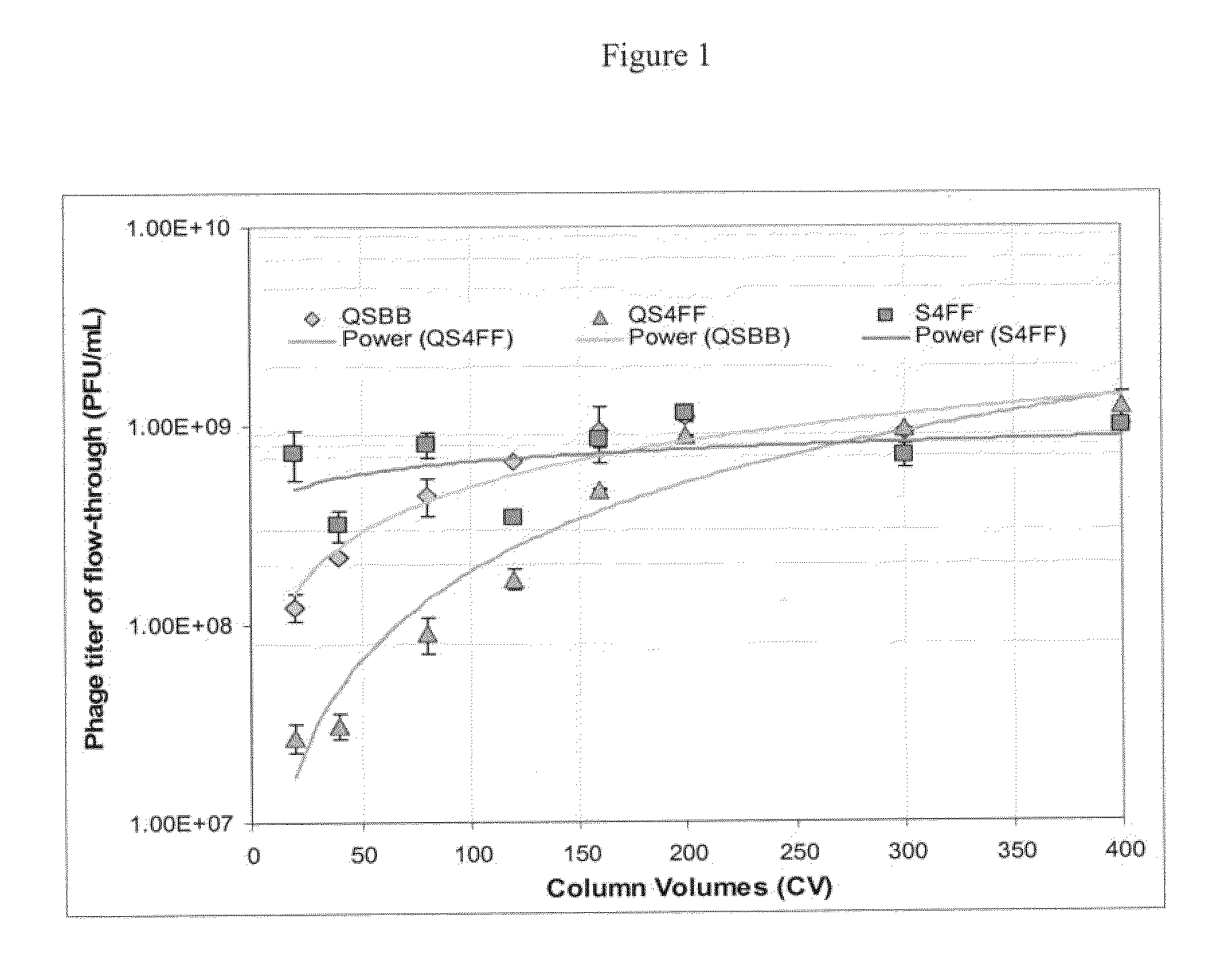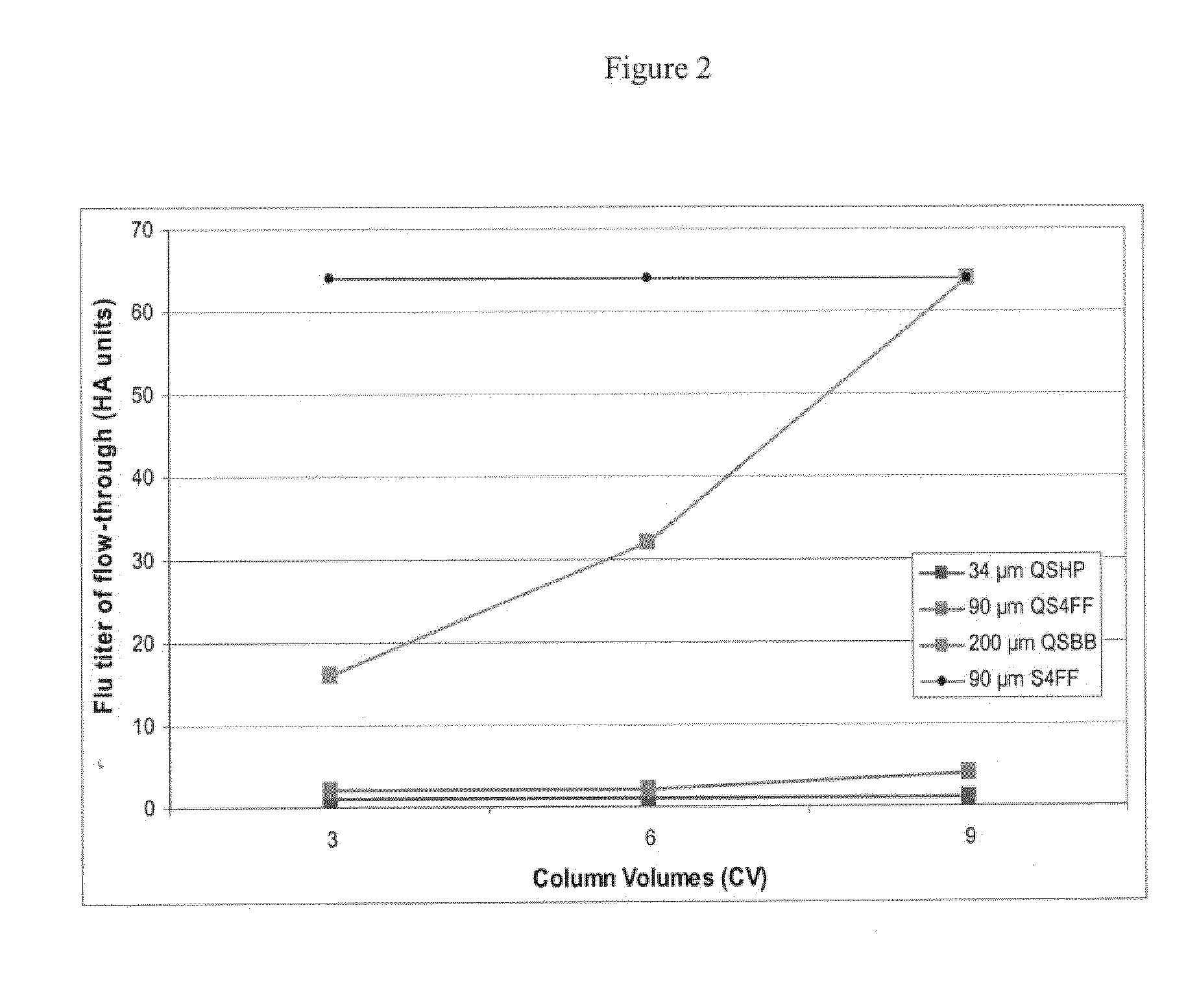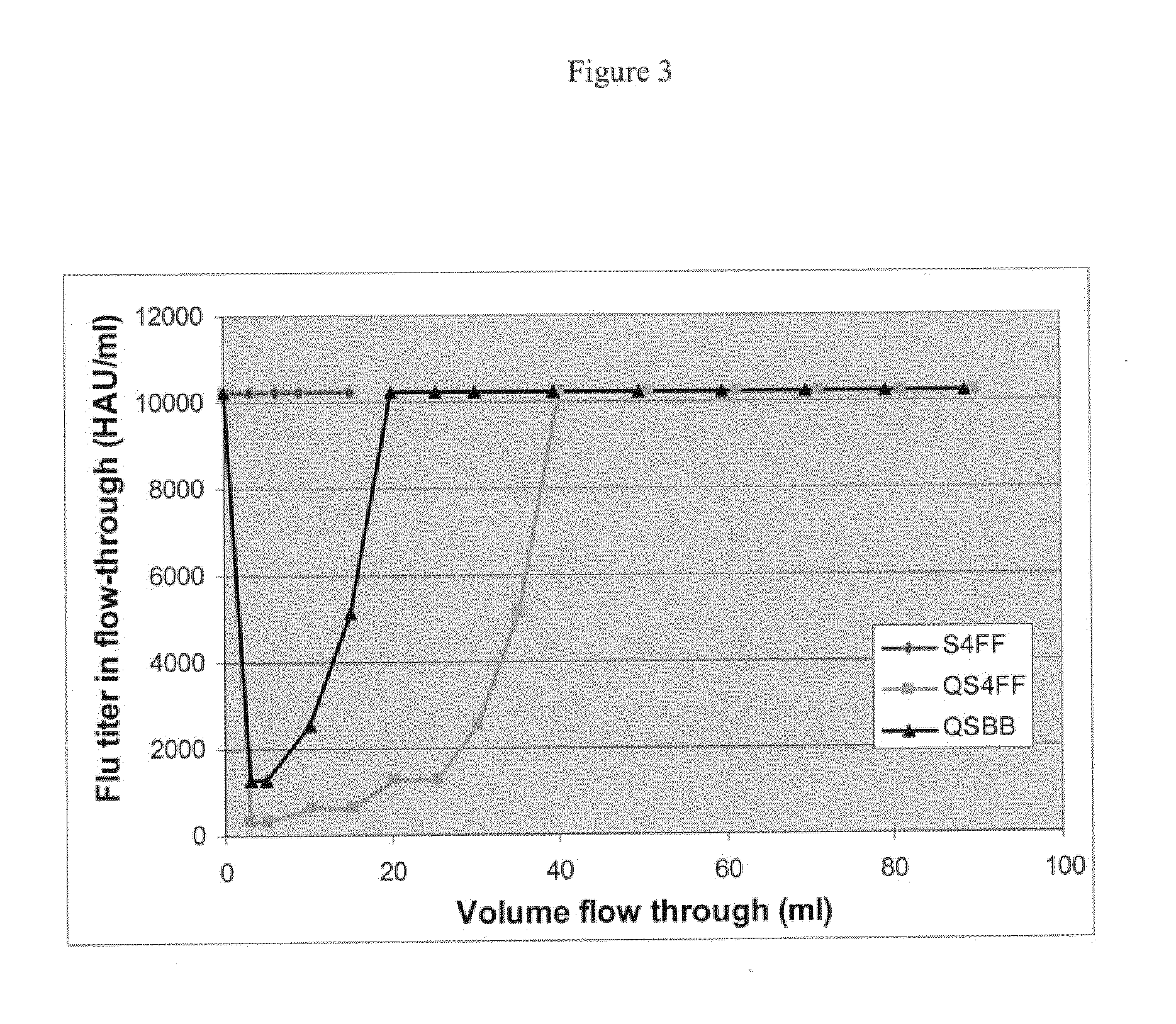Flow through purification processes for large biomolecules
a technology of biomolecules and purification processes, which is applied in the field of flow-through purification processes for separating large biomolecules, can solve the problems of partially eluted with large biomolecules, poor overall yield, and outside the media and subsequently eluted, so as to improve the recovery of large biomolecules, minimize external surface area, and improve the effect of recovery
- Summary
- Abstract
- Description
- Claims
- Application Information
AI Technical Summary
Benefits of technology
Problems solved by technology
Method used
Image
Examples
example 1
Determination of External Surface Area of Heads Per Unit Volume
The external surface area of beads of different sizes per unit volume of the beads can be determined as described herein. In an exemplary experiment, the external surface area of the following beads per unit volume was estimated using the mathematical method described above, Q Sepharose HP with an average mean diameter of 34 μm, Q Sepharose FF with an average mean diameter of 90 μm and Q Sepharose BB with an average mean diameter of 200 μm (GE Healthcare).
For example, using equation I discussed herein, the external surface area per unit volume for a 34 μm average diameter bead can be calculated as follows:
Aes / v=6ηd=6*0.7434×10-4=1305cm-1
Similarly the external surface area for all the other AEC beads was calculated and is summarized in Table I.
TABLE IBead SizeAes / vType of Bead(μm)(cm−1)Q Sepharose HP341305Q Sepharose FF90493Q Sepharose BB200222
As can be observed from Table I, the external surface area decreases with incre...
example 2
Estimating Internal Surface Area of Beads Per Unit Volume Using Static Binding Capacity
The internal surface area of QS4FF (90 μm) and QSBB (200 μm) beads per unit volume, discussed in Example 1, having larger and minimized external surface area, respectively, was estimated by testing their static binding capacity for BSA. BSA has been widely used as a model protein in chromatography. It has an average molecular weight of approximately 66 KD and a pI of ˜5. BSA is representative of the size and charge of most host cell proteins.
In one exemplary experiment, the static capacity of QS4FF and QSBB beads for BSA (Sigma Aldrich Corporation) was measured in two different types of buffers at two different pHs. The experiment was performed by packing a 1 ml column containing either QS4FF or QSBB media, slurring the media in 4 ml of buffer and adding 0.5 ml of the slurry into 14.5 ml of BSA solution having a concentration of 2 mg / ml. After 4 hours, the beads in the mixture were allowed to sett...
example 3
Comparison of the Recovery of Virus-Like Particles (i.e., 100 (i.e., 100 nm BSA Coated Styrene Particles) from Anion Exchange Media of Two Different Bead Sizes
In an exemplary experiment, two separate anion exchange media having different bead sizes were tested for the recovery of virus-like particles. Specifically, the static binding capacities of anion exchange media, Q Sepharose 4FF beads having an average diameter of 90 μm (QS4FF, GE Healthcare) and Q Sepharose Big beads having an average diameter of 200 μm (QSBB, GE Healthcare), were tested for the recovery of 100 nm Bovine serum albumin (BSA) coated styrene particles (Postnova Analytics), which are exemplary virus-like particles and have a similar size and charge as influenza or adenovirus. QS4FF and QSBB media contain quaternary ammonium groups which are positively charged and can bind BSA coated latex particles. Generally, it was assumed that the static binding capacities of these beads for the BSA coated particles should be ...
PUM
| Property | Measurement | Unit |
|---|---|---|
| Fraction | aaaaa | aaaaa |
| Fraction | aaaaa | aaaaa |
| Fraction | aaaaa | aaaaa |
Abstract
Description
Claims
Application Information
 Login to View More
Login to View More - R&D
- Intellectual Property
- Life Sciences
- Materials
- Tech Scout
- Unparalleled Data Quality
- Higher Quality Content
- 60% Fewer Hallucinations
Browse by: Latest US Patents, China's latest patents, Technical Efficacy Thesaurus, Application Domain, Technology Topic, Popular Technical Reports.
© 2025 PatSnap. All rights reserved.Legal|Privacy policy|Modern Slavery Act Transparency Statement|Sitemap|About US| Contact US: help@patsnap.com



